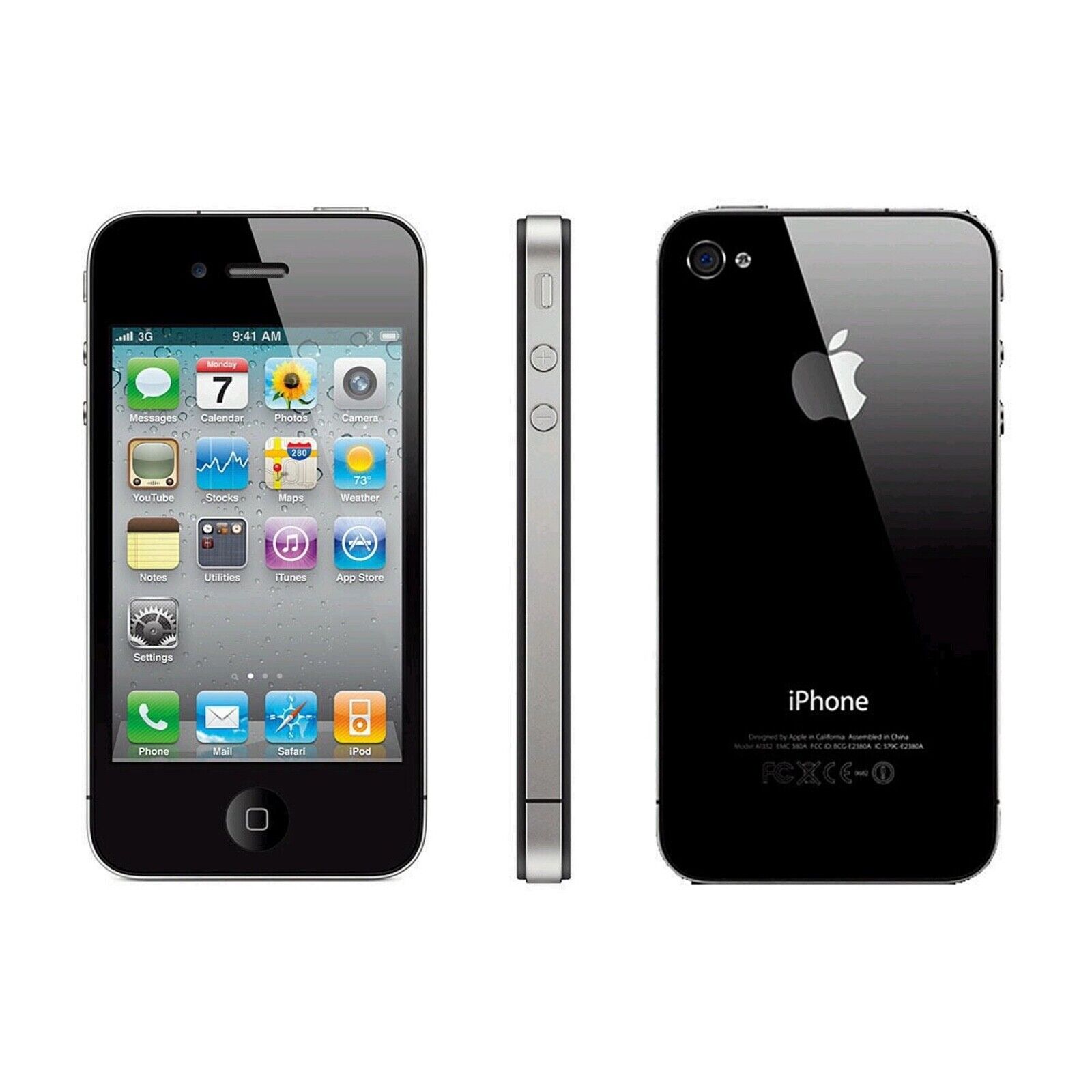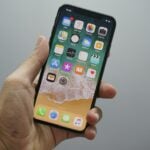The iPhone 4 marked a significant leap in Apple’s smartphone lineup. The device boasted a 3.5-inch Retina display with a resolution of 960×640 pixels, offering a crisp 326 pixels per inch. This high-density screen set a new standard for mobile displays at the time.
Under the hood, the iPhone 4 packed Apple’s A4 chip and 512MB of RAM. These specs enabled smooth performance for tasks like web browsing and app usage. The phone came with either 16GB or 32GB of storage, giving users ample space for photos, videos, and apps.
Apple equipped the iPhone 4 with a 5-megapixel rear camera capable of recording 720p HD video. A VGA front-facing camera allowed for FaceTime video calls. The device’s sleek design featured glass front and back panels with a stainless steel band around the edges.
| Feature | Specification |
|---|---|
| Display | 3.5″ Retina (960×640) |
| Processor | Apple A4 |
| RAM | 512MB |
| Storage | 16GB or 32GB |
| Rear Camera | 5MP, 720p HD video |
| Front Camera | VGA |
| Battery | 1420 mAh |
The iPhone 4 was a groundbreaking device when it was released in 2010. Here’s a rundown of its key specifications:
Display:
- 3.5-inch LCD with 960 x 640 resolution (326 pixels per inch)
- 800:1 contrast ratio
- 500 cd/m2 max brightness
- Fingerprint-resistant coating
Processor:
- Apple A4 chip
Memory:
- 512 MB RAM
Storage:
- 8GB, 16GB, or 32GB flash memory
Camera:
- Rear: 5-megapixel with LED flash, 720p HD video recording at 30 frames per second
- Front: VGA (0.3-megapixel)
Connectivity:
- GSM model: UMTS/HSDPA/HSUPA; GSM/EDGE
- CDMA model: CDMA EV-DO Rev. A
- 802.11b/g/n Wi-Fi (802.11n 2.4GHz only)
- Bluetooth 2.1 + EDR
Battery:
- Built-in rechargeable lithium-ion battery
- Talk time: Up to 7 hours on 3G, up to 14 hours on 2G (GSM model only)
- Standby time: Up to 300 hours
- Internet use: Up to 6 hours on 3G, up to 10 hours on Wi-Fi
- Video playback: Up to 10 hours
- Audio playback: Up to 40 hours
Size and Weight:
- Height: 4.5 inches (115.2 mm)
- Width: 2.31 inches (58.6 mm)
- Depth: 0.37 inch (9.3 mm)
- Weight: 4.8 ounces (137 grams)
Operating System:
- Initially shipped with iOS 4, upgradable to iOS 7.1.2
Other Features:
- Three-axis gyro
- Accelerometer
- Proximity sensor
- Ambient light sensor
- Digital compass
- Assisted GPS
- 30-pin dock connector
- 3.5-mm headphone jack
- Built-in speaker
- Microphone
Key Highlights:
- Retina Display
- Dual Cameras
- Premium Design
- iOS 4
The iPhone 4 was a significant step forward in smartphone technology, setting a new standard for display quality, camera capabilities, and overall design. It remains a classic device in Apple’s history.
Design and Build
The iPhone 4 introduced a striking new design that set it apart from previous models. Its sleek form factor and premium materials established a new standard for smartphone aesthetics and build quality.
Dimensions and Weight
The iPhone 4 boasts a compact and lightweight design. It measures 115.2 mm in height, 58.6 mm in width, and 9.3 mm in depth. This slim profile makes it comfortable to hold and easy to slip into your pocket.
The device weighs just 137 grams. This light weight contributes to its portability and ease of use during extended periods.
Apple achieved this svelte form factor without compromising on features. The iPhone 4 packs a powerful processor and improved camera into its slim frame.
Materials and Construction
The iPhone 4 features a premium build with glass and stainless steel. Its front and back panels are made of aluminosilicate glass, which is highly resistant to scratches and damage.
A stainless steel band wraps around the device’s edges. This band serves as both a structural element and part of the antenna system.
The glass and steel construction gives the iPhone 4 a luxurious feel. It elevates the device above plastic-bodied competitors of its time.
| Component | Material |
|---|---|
| Front | Glass |
| Back | Glass |
| Frame | Stainless Steel |
The iPhone 4 was available in two colors at launch: black and white. These classic options complement its sophisticated design.
Hardware Specifications
The iPhone 4 introduced groundbreaking hardware features that set new standards for smartphones. Its innovative components enhanced user experience and performance across key areas.
Processor and Memory
The iPhone 4 runs on the Apple A4 chipset, a system-on-chip designed by Apple. This processor delivers swift performance for apps and multitasking.
The device offers 512 MB of RAM, doubling the memory of its predecessor. This upgrade enables smoother app switching and improved web browsing.
Storage options include 8 GB, 16 GB, and 32 GB models. The lack of expandable storage means you’ll need to choose your capacity wisely.
| Component | Specification |
|---|---|
| Processor | Apple A4 |
| RAM | 512 MB |
| Storage | 8/16/32 GB |
Display Technology
The iPhone 4 features a 3.5-inch Retina display with LED backlighting. This screen boasts a resolution of 640×960 pixels, resulting in a pixel density of 326 ppi.
The high pixel density makes individual pixels indistinguishable to the human eye at typical viewing distances. This creates incredibly sharp text and images.
The display uses IPS (In-Plane Switching) technology for improved color accuracy and wider viewing angles. It also incorporates a fingerprint-resistant oleophobic coating to reduce smudges.
Multi-touch capability allows for intuitive gestures like pinch-to-zoom and swipe navigation.
Camera and Video
The iPhone 4 sports a 5-megapixel rear camera with autofocus and LED flash. This upgrade significantly improves photo quality compared to earlier models.
Video recording capabilities include 720p HD at 30 frames per second. The rear camera also supports tap-to-focus during video capture.
A new front-facing VGA camera enables FaceTime video calls and selfie photos. While limited in resolution, it proves adequate for video chats.
The camera app includes features like geotagging, which adds location data to your photos and videos.
Connectivity and Sensors
Wi-Fi support includes 802.11b/g/n standards for fast wireless internet access. Bluetooth 2.1 + EDR allows for wireless accessory connections.
The iPhone 4 supports 3G cellular networks, enabling faster data speeds when Wi-Fi isn’t available.
GPS and GLONASS provide accurate location services for navigation and location-based apps.
Additional sensors include:
- Accelerometer for motion sensing
- Gyroscope for enhanced motion detection
- Proximity sensor to disable the screen during calls
- Ambient light sensor for automatic brightness adjustment
These sensors enable various features and help conserve battery life.
Software and Performance
The iPhone 4 introduced significant improvements in software and performance. It launched with iOS 4 and supported upgrades to later versions. The device came with pre-installed Apple apps and featured enhanced audio and video playback capabilities.
Operating System
The iPhone 4 shipped with iOS 4, a major update to Apple’s mobile operating system. iOS 4 brought multitasking support, allowing you to switch between apps quickly. It also introduced folders for organizing apps and a unified inbox for email.
The device could be upgraded to iOS 7.1.2, the last supported version. This gave you access to features like Control Center and AirDrop. The OS updates improved performance and security over time.
iOS 4 included the Safari web browser, which supported HTML5 and delivered faster page loading times. You could sync bookmarks with your desktop Safari browser for seamless browsing across devices.
Pre-Installed Apps and Features
The iPhone 4 came with a suite of built-in Apple apps. These included:
- Mail for email management
- Calendar for scheduling
- Contacts for address book
- Notes for quick memos
- Maps for navigation
- iPod for music playback
- App Store for downloading new apps
FaceTime, a video calling feature, debuted on the iPhone 4. It allowed you to make video calls over Wi-Fi to other Apple devices. The phone also included Game Center, a social gaming platform.
| App Category | Notable Pre-installed Apps |
|---|---|
| Productivity | Mail, Calendar, Notes |
| Media | iPod, Photos, YouTube |
| Communication | FaceTime, Messages |
| Utilities | Calculator, Compass, Clock |
Audio and Video Playback
The iPhone 4 supported various audio formats including AAC, MP3, and Apple Lossless. Its improved speaker delivered clearer sound for music and speakerphone calls. You could use the standard 3.5mm headphone jack or connect Bluetooth headphones.
Video playback capabilities were enhanced by the Retina display. The device supported H.264 video up to 720p at 30 frames per second. This allowed for smooth playback of high-definition content.
You could purchase and rent movies and TV shows directly from the iTunes Store. The iPod app organized your media library and created playlists. AirPlay let you stream audio and video to compatible devices like Apple TV.
Battery and Power
The iPhone 4 features a rechargeable lithium-ion battery with impressive performance for its time. It offers extended usage times for various activities and supports convenient charging options.
Battery Life
The iPhone 4’s built-in rechargeable lithium-ion battery provides up to 7 hours of talk time on 3G networks. For 2G networks, you can enjoy up to 14 hours of talk time on the GSM model. Standby time reaches up to 300 hours.
Internet use lasts up to 6 hours on 3G and 10 hours on Wi-Fi. You can watch videos for up to 10 hours or listen to audio for up to 40 hours on a single charge.
These figures vary based on usage patterns and settings. Adjusting screen brightness and disabling unused features can help extend battery life.
Charging and Power Management
The iPhone 4 charges via USB connection to a computer or power adapter. This versatility allows you to power up your device at home, work, or on the go.
Apple’s power management system optimizes battery performance. It includes features like:
- Background App Refresh control
- Low Power Mode
- Battery usage breakdown by app
To maintain battery health, avoid extreme temperatures and complete charge cycles regularly. The iPhone 4 doesn’t support wireless charging, which became available in later models.
| Charging Method | Compatibility |
|---|---|
| USB to Computer | Yes |
| USB Power Adapter | Yes |
| Wireless Charging | No |
Remember to use Apple-certified charging accessories to ensure safety and optimal charging speeds.
Frequently Asked Questions
The iPhone 4 brought significant improvements to Apple’s smartphone line. Its features, battery life, and network capabilities set new standards for mobile devices.
What are the key features of the iPhone 4?
The iPhone 4 introduced the high-resolution Retina display with 326 pixels per inch. It also featured a new design with a stainless steel frame and glass front and back panels.
The device came with a 5-megapixel rear camera capable of recording 720p HD video. A front-facing camera enabled FaceTime video calls.
What is the battery life of the iPhone 4?
The iPhone 4’s battery life improved over its predecessor. It offered up to 7 hours of talk time on 3G and up to 10 hours of web browsing on Wi-Fi.
The A4 processor contributed to a 40% increase in battery efficiency. This allowed for longer usage between charges.
How is the iPhone 4 different from the iPhone 4S?
The iPhone 4S upgraded several features from the iPhone 4. It introduced the A5 chip for faster performance and improved graphics.
The 4S also featured an 8-megapixel camera, up from 5 megapixels in the iPhone 4. Siri, the voice assistant, debuted on the 4S model.
What is the release date of the iPhone 4?
Apple announced the iPhone 4 on June 7, 2010, at the Worldwide Developers Conference. The device became available for purchase on June 24, 2010, in select countries.
How does the iPhone 4’s size compare to other iPhone models?
The iPhone 4 measured 115.2 x 58.6 x 9.3 mm. It was thinner than its predecessor, the iPhone 3GS.
At the time of its release, the iPhone 4 was the thinnest smartphone on the market. Its compact size made it easy to use with one hand.
Does the iPhone 4 support 3G or 4G network connectivity?
The iPhone 4 supported 3G network connectivity. It did not have 4G capabilities, as 4G networks were not widely available at the time of its release.
The device could connect to UMTS, HSDPA, and HSUPA networks for faster data speeds than previous models.
| Feature | iPhone 4 Specification |
|---|---|
| Display | 3.5-inch Retina display |
| Resolution | 640 x 960 pixels |
| Processor | Apple A4 |
| Rear Camera | 5 megapixels |
| Video Recording | 720p HD |
| Front Camera | VGA |
| Storage Options | 8GB, 16GB, 32GB |
| Network | 3G |







